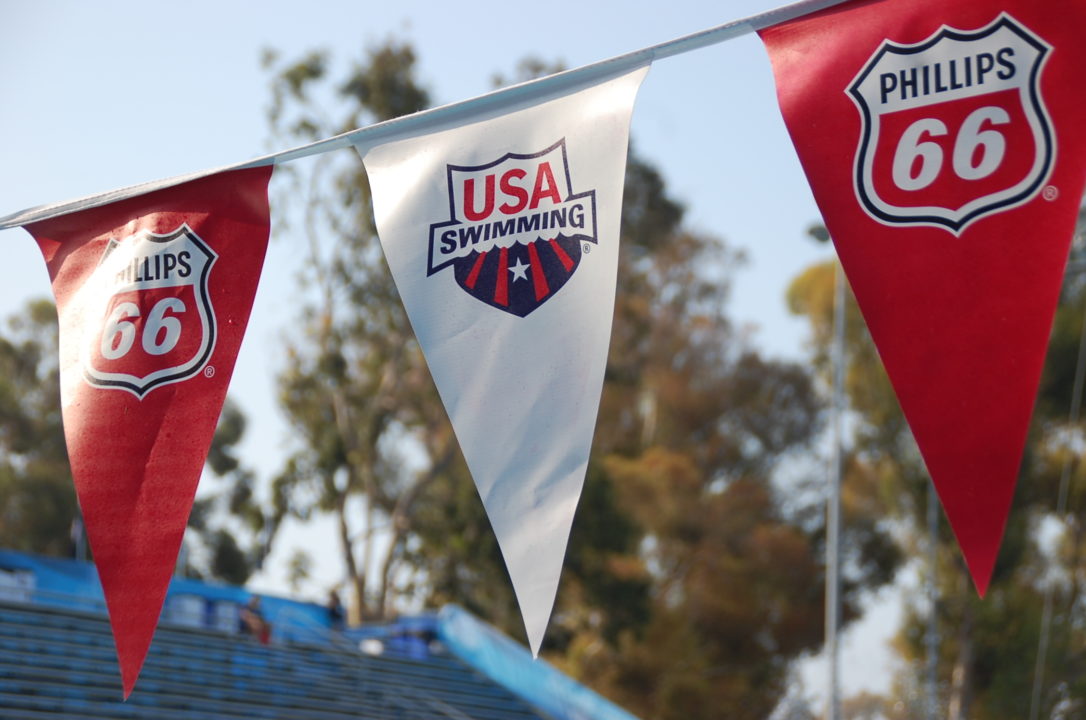Saturday, June 15th, 2019, will mark the opening day of recruiting for the high school class of 2021. As commitments from the class of 2020 are still being made in droves, coaches will now be able to start having serious conversations with the rising juniors, and making non-binding scholarship offers and accepting non-binding verbal commitments.
Specifically, starting tomorrow, coaches can:
- Coaches can have correspondence/private messages (texts, e-mails, Instagram/Twitter,/Facebook private messages, etc.) with recruits
- Coaches can accept incoming phone calls from recruits
- Coaches can place phone calls to recruits
- Coaches can make verbal offer of roster spot, scholarship, etc.
With the ever-changing NCAA recruiting rules comes one last change as the new class officially comes on to the market: except this one isn’t driven by the NCAA.
When USA Swimming announced their latest round of athlete protection policies, known as MAAPP, included among it were certain restrictions on conversation between adult members and members under the age of 18. One of the major objections to these new rules had to do with how they might impact college recruiting, where adult coaches and athletes affiliated with college teams frequently come into contact with athletes under the age of 18.
USA Swimming, after holding focus groups with coaches, has decided to table the rules as they apply to college recruiting for now. In an update to its MAAPP policies, available online, USA Swimming has added a document that is titled “Non-USA Swimming Activities” and reads as follows:
On April 29, 2019, USA Swimming released its Minor Athlete Abuse Prevention Policy (MAAPP) addressing one-on-one interactions, social media and electronic communications, travel, locker rooms and changing areas, and massages, rubdowns and athletic training modalities. All USA Swimming member clubs are required to implement MAAPP in full by June 23, 2019.
The U.S. Center for SafeSport (“the Center”) created MAAPP as the baseline for acceptable safety standards that limit one-on-one interactions between adults and minor athletes. MAAPP is designed to facilitate healthy boundaries between adults and minor athletes in order to protect minor athletes from abuse in sport.
USA Swimming initially understood that MAAPP applied to all Applicable Adults and their interactions with minor athletes, whether or not the interaction stems from USA Swimming activities. However, based on feedback received from our coach members who serve in dual roles (including, for example, as high school and collegiate coaches), USA Swimming sought additional clarification on this point from the Center. The Center subsequently determined that MAAPP applies to Applicable Adults and their interactions with minor athletes solely in conjunction with USA Swimming activities.
While we encourage our members to take the necessary steps to protect minor athletes from abuse in sport regardless of the organizational affiliation, the expectations set forth in MAAPP will only be enforced and audited with respect to USA Swimming activities.
This new update will not only apply to college recruiting, but will help clarify concerns about, for example, parents who are adult members interacting with their children’s friends, or their friends’ children, that might have nothing to do with swimming activities – such as carpool arrangements to-and-from school.
Full Recruiting Timeline Chart, developed by Jared Anderson, on recruiting rules:
| OLD RULES | NEW RULES | CHANGE | |
| Coaches can have correspondence/private messages (texts, e-mails, Instagram/Twitter,/Facebook private messages, etc.) with recruit | September 1 after sophomore year | June 15 after sophomore year |
A month and a half earlier
|
| Coaches can accept incoming phone calls from recruit | Anytime | June 15 after sophomore year | Now restricted |
| Coaches can place phone calls to recruit | July 1 after junior year | June 15 after sophomore year |
Just over a year earlier
|
| Recruit can take unofficial visit | September 1 of junior year | August 1 before junior year | A month earlier |
| Recruit can take official visit | September 1 of junior year | August 1 before junior year | A month earlier |
| Coach can contact athlete off-campus | July 1 after junior year | August 1 before junior year |
Almost a year earlier
|
| Coach can make verbal offer of roster spot, scholarship, etc. | Anytime | Anytime beyond June 15 after sophomore year |
Not legislated – but more restricted now that early recruiting communication is prohibited
|

Sanity prevails. Thank you to the college coaches who were a part of the discussions!
Why did these consultations not happen before the policy was released? So bungled.
Exactly! What was the rush? I understand they were in full CYA mode, but after doing practically nothing for decades, all the sudden they roll out these poorly constructed MAAPP guidelines with little to no input from those it would effect and clearly having no understanding whatsoever or consideration given to how the various members of the swimming community actually interacts with each other. Oh and don’t forget–send them more money, cuz they’re doing such a bang up job. Honestly…do they have any idea how mickey mouse this looks?
I’m waiting for them to start tacking on the safe sport “team fee”. “Each club is required to pay $xx to stay ‘Safe Sport Compliant’
What if the college coach is ALSO a USAS coach?
It’s not about what the coach is or isn’t. As is pretty clearly laid out, it’s about the nature of the activity, not the status of the coach.